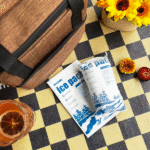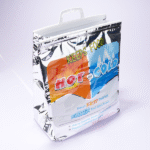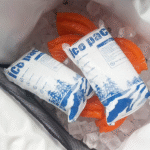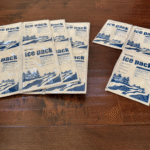How Should You Choose Online Dry Ice Packs for Cold‑Chain Shipping?
In this article you’ll learn how online dry ice packs can simplify your cold‐chain logistics, reduce package rejections and help you meet global shipping demands. Recent data show cold‐chain packaging market size is expected to reach USD 1.69 billion in 2025. You’ll get actionable insights to select, purchase and deploy these packs effectively.
-
What makes online dry ice packs different and why they matter in cold‐chain logistics?
-
How to evaluate, purchase and integrate online dry ice packs into your shipping workflow?
-
What best practices for handling, regulatory compliance and cost-efficiency when using online dry ice packs?
-
What 2025 trends are shaping the market for online dry ice packs and how you can stay ahead?
H2: What makes online dry ice packs different and why do you need them?
Short answer: Online dry ice packs are readily purchasable packs designed for shipping temperature‑sensitive goods and ordered via web platforms—they allow you to buy ready-to‑ship coolant packs without sourcing locally. They matter because they simplify logistics and support temperature-critical shipments.
In depth:
The term “online dry ice packs” indicates that you can buy dry ice pack sheets, pouches or flexible freezing packs via e‑commerce rather than custom manufacturing. This is especially useful when you ship globally or need rapid procurement. For example, a guide shows that dry‑ice usage is rising due to mismatches between supply and demand: CO₂ supply grew only ~0.5% annually while consumption climbs ~5%.
From your perspective, buying online means you can access standardized products, evaluate specifications, and integrate them faster into your cold‐chain packaging process.
Key characteristics of online dry ice packs
-
They are often delivered flat, cut‐to‐size or modular so you can flex fit them into various container dimensions. (See product example below.)
-
Many are reusable sheets or pouches rather than loose dry ice pellets—lowering shipping hazards and handling complexity.
-
They suit cold‐chain because they maintain very low temperatures, improve surface contact, and enable faster deployment when purchased online.
-
Because they are bought online, you can compare specs, certifications (FDA, food‑grade), reuse versus single‑use, and shipping lead time.
| Feature | Traditional dry ice | Online dry ice packs (sheet/pouch) | Your practical benefit |
|---|---|---|---|
| Procurement | Locally sourced dry ice blocks | Pre‑packaged sheets/pouches you buy online | Faster ordering, standardized specs |
| Form factor | Loose blocks or pellets | Sheets/pouches cut to fit container | Better fit, less void space |
| Handling complexity | Requires hazmat compliance, gas venting | Some online packs avoid full hazmat classification | Reduced complexity, easier shipping |
| Reuse potential | Often single use | Many online packs are reusable or multi‑use | Lower ongoing cost |
| Lead time | Dependent on local vendor availability | Online stock, global shipping options | Better agility in supply chain |
Tip: When you plan your next shipment, search for “dry ice pack sheets for shipping” and compare different online pack providers with specs such as hold time, minimum temperature capability, reuse count, and user reviews.
How do you evaluate and purchase online dry ice packs for your shipments?
Short answer: Evaluate online dry ice packs by matching the pack’s temperature range, hold time, form factor, shipping lead time and regulatory compliance to your specific shipment scenario. Choosing the right pack ensures reliability and cost‑effectiveness.
In depth:
Here is a checklist tailored for you when purchasing online dry ice packs:
-
Temperature capability – Ensure the pack can maintain the required low temperature for your product. Some packs are designed for ultra‑cold (< –70 °C) while others only for chilled ranges. For ultra‐cold, dry‑ice sheet formats may be needed.
-
Hold time – How long will the pack keep your product in spec? If you ship internationally or expect delays, choose sheets rated for 48‑72 hours or more. Without this you risk temperature excursions.
-
Form factor & container fit – Online packs come as sheets, pouches or blocks; pick one that suits your container size and payload geometry. Good surface contact reduces hot spots.
-
Shipping lead time & online supplier reliability – Buying online must also factor in delivery time and stock reliability. Some urgent shipments cannot wait for delayed pack delivery.
-
Reusability and cost – Online packs vary: some are single‑use, others reusable many cycles. For recurring shipments, reusable sheet packs may yield cost savings.
-
Regulatory & carrier compliance – Check if the pack meets carrier rules for air or ground transport, venting of CO₂, hazmat classification if applicable. For example, carrier guides highlight that shipments with dry ice must indicate weight and venting instructions.
-
Online user reviews and spec transparency – Because you’re buying online, inspect supplier spec sheets, user reviews and check certifications (e.g., FDA food‑contact approved, reusable claims).
H3: Decision matrix for online dry ice pack purchase
| Factor | Minimum spec you need | Your decision point |
|---|---|---|
| Minimum temperature | Match payload spec (e.g., –20 °C, –40 °C, –78 °C) | Select vendor offering ≥ this value |
| Hold time | Based on route + buffer (24h, 48h, 72h) | Choose pack rated for route plus margin |
| Form factor | Sheet/pouch fits container shape | Pick sheet for surface contact, pouch for irregular shapes |
| Lead time | Online delivery days | Choose vendor with stock & reliable shipping |
| Reuse cycles | Single vs reusable (10‑50 times) | Choose reusable if high‑volume/recurring |
| Cost per shipment | Pack cost + freight weight impact | Calculate total cost with freight savings |
| Carrier compliance | Packaging meets hazmat/air rules | Ensure supplier provides documentation |
Action for you: Choose two online suppliers, request sample packs, perform a mock shipment with your container and payload geometry. Measure temperature endpoint and container void space to decide which online dry ice pack works best.
What best practices should you follow when using online dry ice packs (handling, compliance, cost‑efficiency)?
Short answer: Handling online dry ice packs correctly, following regulatory rules and optimizing for cost are keys to making the solution work—you must treat online dry ice packs as both an operational tool and regulatory component.
In depth:
Handling & compliance
-
Ensure venting: If packs incorporate sublimating dry ice, CO₂ gas may build up in sealed containers—don’t overlook ventilation.
-
Label weight of coolant: Carriers require the weight of dry ice (or equivalent) and hazard class if applicable.
-
Use insulation in combination: Online dry ice packs alone might not suffice—pair with insulated containers and minimize air gaps.
-
Conduct training: Staff should know safe handling of ultra‐cold packs, avoid contact burns, and manage waste reuse/disposal.
-
Shipping modes: Check whether air or ground. Online packs may bypass full dry ice hazmat classification if specifically designed for ease of shipment (as some suppliers state).
Cost‑efficiency
-
Freight weight/volume: Using sheet‑style online packs may reduce container void space and dim‑weight charges → lower shipping cost. For example, a guide indicates the packaging refrigerants market is growing as firms optimize solutions.
-
Avoid shipment failures: If temperature excursions cause product loss, cost is far higher than pack cost. Use online packs with validated spec to protect shipments.
-
Reuse vs single use: For recurring shipments, online reusable packs offer lower per‐shipment cost and better sustainability profile.
-
Track pack performance: Maintain metrics on shipments using online packs—failure rate, temperature outcomes, cost per shipment—to build your internal business case.
Tips for you
-
Scenario 1: You ship frozen samples internationally requiring –40 °C for 48 h. Choose sheet‑style online pack rated ≥ –40 °C, pair with insulated container, schedule express transit, document pack weight.
-
Scenario 2: You ship chilled biologics at 2‑8 °C for 24 h. Choose a reusable online pack rated for 2‑8 °C range, use minimal dry ice substitution if possible.
-
Scenario 3: You run recurring shipments every week. Negotiate online pack volume pricing, choose reusable sheet format, integrate pack reuse tracking system.
实际案例: A biotech firm needed to ship vials at –70 °C to a remote lab. They ordered online dry ice pack sheets rated for –78 °C, ran a 48‑h validation with their container, then executed the shipment. The payload arrived within spec, and the recurring use of the online packs cut their coolant procurement lead‑time by 40%.
What 2025 trends are shaping the market for online dry ice packs?
Trend overview: In 2025 the cold‑chain ecosystem is evolving fast. The concept of online dry ice packs aligns with larger shifts: direct‑to‑consumer (D2C) cold‑chain shipping, e‑commerce for temperature‑sensitive goods, sustainability mandates, and smart packaging. The cold‑chain packaging market in the U.S. alone is projected to grow from USD 7.97 billion in 2024 and register a CAGR of ~15.6% from 2025‑2030.
From your vantage point, embracing online dry ice packs not only supports operational agility but also positions you in line with future demands.
Latest developments
-
E‑commerce and D2C shipping growth: More companies order cold‑chain packaging online rather than through local brokers, enabling faster sourcing and standardized specs.
-
Sustainability & reuse emphasis: Portfolio of online dry ice packs increasingly includes reusable and lower‑waste options. For example, suppliers advertise cut‑to‑size reusable sheets.
-
Smart supply chain integration: Online vendors increasingly provide data sheets, online ordering platforms, inventory tracking, helping logistics teams scale.
-
Hybrid pack solutions: Some online dry ice packs integrate with phase‑change materials (PCMs) for optimized performance and lower regulatory burden.
Market insights
-
The global cold‑chain refrigerant/packaging market is forecast to reach USD 2.92 billion by 2032 with an 8.14% CAGR.
-
Because of this growth, online purchasing of coolant packs (including dry ice pack sheets) offers you access to innovation, volume pricing and faster time‑to‑deploy.
-
Vendors who sell online are under pressure to provide validated performance data, reuse counts and sustainability credentials—this benefits you as a buyer.
For you: Align your procurement strategy with this trend. Prioritize online vendors that offer scalability, reuse, data transparency and global shipping support. Doing so gives you a competitive edge.
Frequently Asked Questions
Q1: Can online dry ice packs replace traditional dry ice blocks?
A: In some cases yes—but it depends on your minimum temperature requirement and regulatory risk. If you require ultra‑cold (< –70 °C) and rapid sublimation, traditional dry ice may still be needed. But online sheet/pouch packs often simplify sourcing and handling.
Q2: What lead time should I expect when ordering online dry ice packs?
A: Lead times vary by vendor, stock and shipping region. For critical shipments you should allow extra buffer—use analytics from the vendor, check shipping dates and always validate before first use.
Q3: How many reusable cycles can online dry ice packs typically handle?
A: It depends on the product—some reusable sheets claim “washable and reuse many times” via their polymer construction. Check vendor spec for “cycles” or “reuse count”.
Q4: How do I integrate internal links for my site using this content?
A: You can link to relevant pages such as “dry ice pack sheets for coolers”, “shipping worldwide dry ice pack sheet”, “cooler dry ice packs” using descriptive anchor text to strengthen your internal site architecture.
Q5: Are online dry ice packs safe and compliant for air shipping?
A: Some are designed to avoid full hazmat classification (especially sheet/pouches that mimic gel pack behavior), but you still need to check carrier rules, pack weight, labelling and ventilation per the guidelines.
Summary & Recommendations
Key takeaways:
-
Online dry ice packs let you source coolant sheets or pouches via e‑commerce, enabling faster procurement and standardized performance.
-
Proper evaluation—of temperature range, hold time, form factor, shipping lead time and regulatory compliance—is critical for success.
-
In 2025 the market is shifting towards reuse, sustainability, e‑commerce provisioning and hybrid pack solutions—aligning with online sourcing of dry ice packs positions you to stay ahead.
Next steps:
-
Identify your next three shipments and define their temperature, duration and container constraints.
-
Shortlist 2–3 online dry ice pack vendors and order sample packs. Run a fit & hold test with your container and mock payload.
-
Update your SOP to include pack selection (online vendor name, lead time, reuse count), container fit check, ventilation and post‑shipment review.
Call to Action: Reach out today to an online specialty coolant pack vendor—mention that you “require cold‑chain shipping packs for temperature‑sensitive goods under topline reusability and global shipping support”—and secure your first sample.
About Tempk
At Tempk we specialise in cold‑chain packaging solutions tailored for businesses shipping temperature‑sensitive goods globally. We offer online‑sourced dry ice pack sheets, pouches and complete logistics support across multiple depots. Our solutions provide validated cold‑chain performance, reuse capability and global sourcing flexibility.
Call to Action: Contact our team for a consultation on your next shipping run—and explore how online dry ice packs can be integrated into your cold‑chain strategy.
























